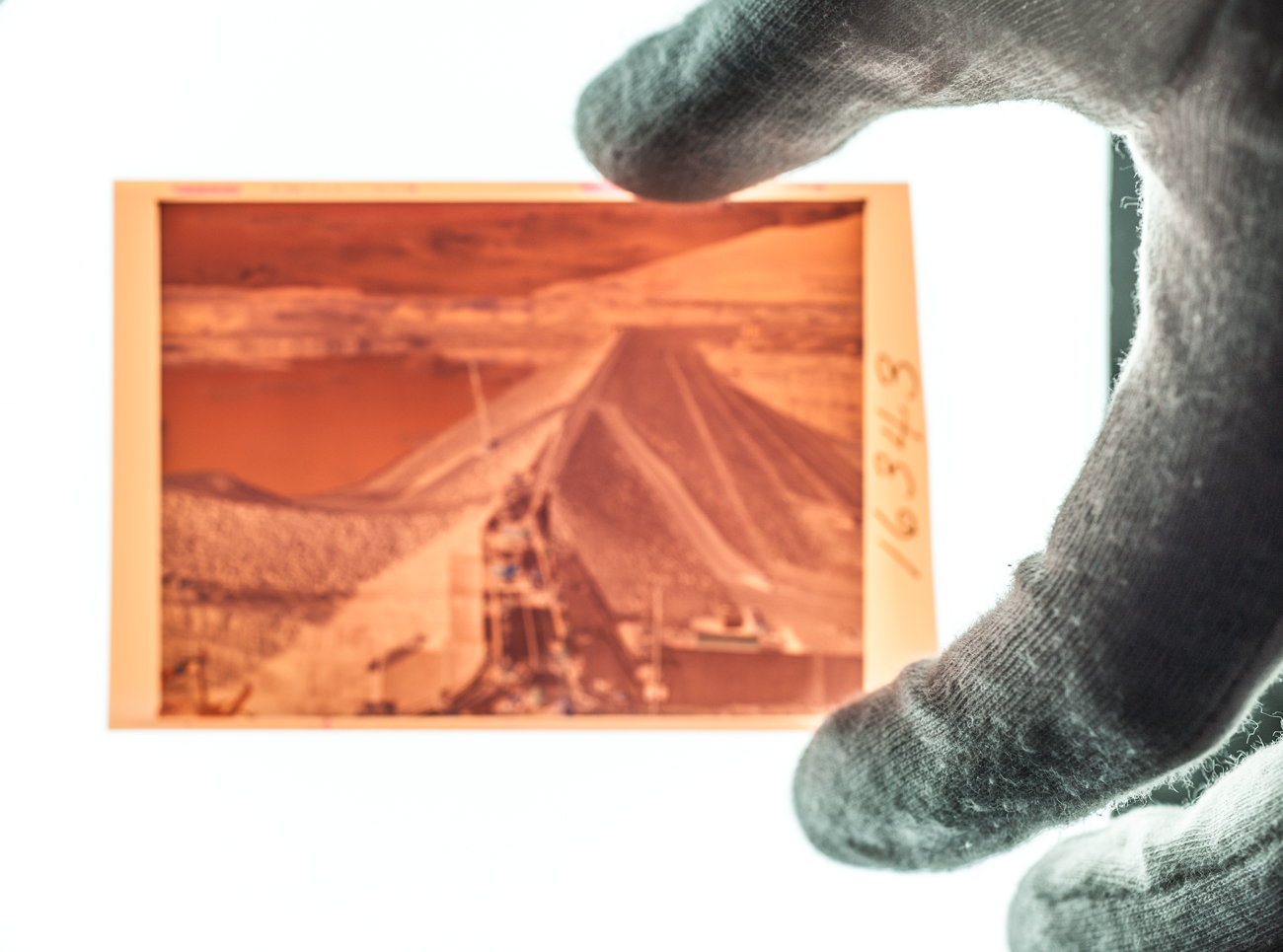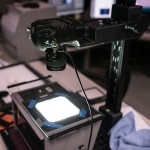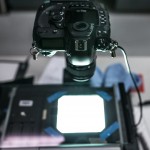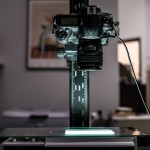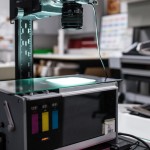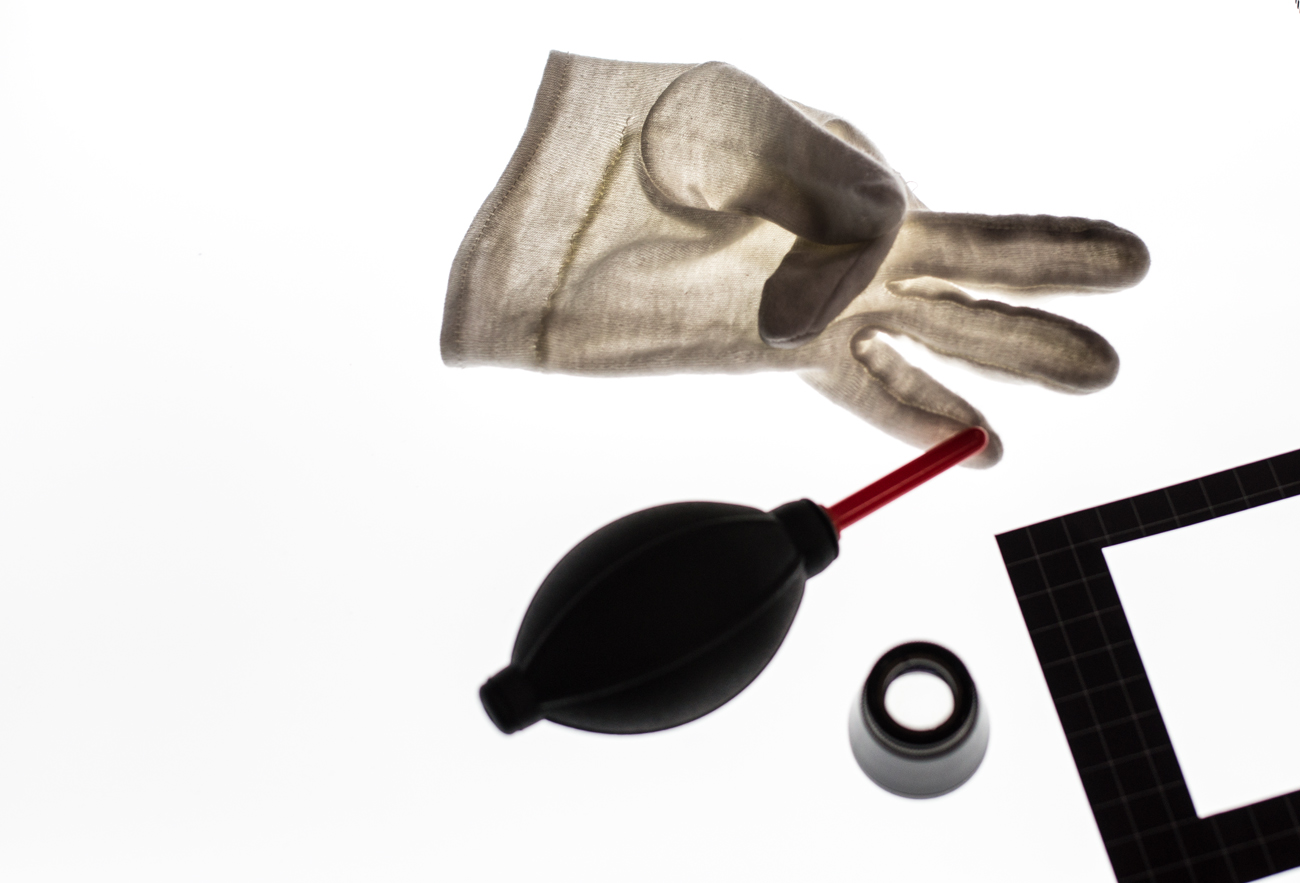A major part of our responsibilities in the Imaging department is the digitization of photographs from the BC Archives collection. There’s around 5 million photographic images in the collection on a variety of media, from daguerreotypes to glass slides, and everything in between. With only about 80,000 objects digitized so far, anything to make our jobs more efficient is a real bonus.
When I first started working at RBCM, all of the scanning was done using flatbed scanners. At the time I was concentrating on scanning 35mm slides, so I would load up a tray of slides, do a preview scan, make corrections one by one in the scanning software, perform the final scan and then do final adjustments in Photoshop. I think I was averaging about 60 a day. Using a DSLR, I can now I can produce that many in about two hours.
Until recently, the idea of doing museum quality scans using a digital SLR was fairly unheard of. The resolution, and more importantly, dynamic range, simply were not available. We started working with our Nikon D3X, which at 24 megapixels and over 13 stops of dynamic range, allows us to exceed our previous resolution standard and ensures we can capture the full range of tones from most film-based media, colour slides being the exception. Nikon’s D800E (over 14 stops EV) has solved that issue for us as well, so we now have two film digitization stations set up, one for negatives and one for positives.
Our copy stations are in essence fairly simple setups… a copy stand, a light source and a camera mounted with a macro lens. For the station I use most often for copying negatives, my light source is an old Omega Chromega enlarger head that we’ve flipped upside down. This allows me to balance the halogen bulb in the head to counter-balance for the orange mask on the negative emulsion. Due to the differences in each film’s orange mask, not to mention variability in the film’s development, the compensation is never perfect, but close enough to give us a really good start. On top of the enlarger head, I sandwich the negative between two sheets of anti-newton glass (http://en.wikipedia.org/wiki/Newton’s_rings) to keep the negative flat and in focus. The glass is actually recycled from a dead flatbed scanner. You can see the setup in the photos below.
Our slide station is very similar, but is actually a purpose-built copy station with a built in light source. It also has lights on the side for copying non-transmissive materials like prints and documents. At this station we shoot tethered to a laptop in order to check our focus…because the slide is mounted, it can’t be sandwiched between glass and the film in each slide sits at slightly different elevations, so each one must be re-focused.
We still use our flatbed scanner frequently, almost daily. We often require more resolution than the cameras deliver when scanning film. And we sometimes need to digitize reflective materials that just don’t lend well to a camera, whether because the prints are glossy, or pasted in an album. Or both. But by freeing up the scanner for more specialized scanning, we’ve been able to increase our production, while maintaining, even exceeding, our quality standards.
Next up, Using a Scanner as a Camera…!



